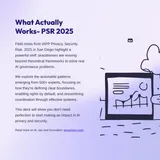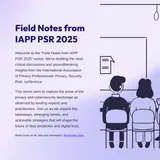Three technical ingredients determine enterprise agent reliability
The intersection of AI agents and enterprise accountability fascinates me, particularly the challenge of building systems that can operate autonomously while maintaining complete audit trails and decision traceability.

The intersection of AI agents and enterprise accountability fascinates me, particularly the challenge of building systems that can operate autonomously while maintaining complete audit trails and decision traceability. As organizations deploy agents for increasingly complex workflows—from contract analysis to regulatory compliance—the ability to reconstruct exactly how an agent reached specific conclusions becomes not just technically interesting but legally essential. This audit requirement creates a fascinating tension between the fluid, probabilistic nature of LLM reasoning and the rigid documentation standards that enterprise governance demands.
Enterprise AI agent success depends on specific technical abilities rather than general AI sophistication. Based on "3 ingredients for building reliable enterprise agents" by Harrison Chase of LangChain, successful enterprise agents need three core technical components: orchestration through deterministic workflows, memory systems for retaining context, and evaluation frameworks for measuring performance. Chase presents these as the essential technical requirements that differentiate production-ready enterprise agents from prototypes or consumer chat applications.
Chase's three technical ingredients framework
Chase highlights three specific technical capabilities that determine enterprise agent success: orchestration, memory, and evaluation. These are concrete engineering requirements rather than abstract adoption factors.
Orchestration involves balancing LLM-driven agent behavior with deterministic workflows based on application needs. Memory includes both short-term context retention and long-term knowledge persistence. Evaluation encompasses observability tools and testing frameworks that facilitate performance measurement and debugging.
The framework addresses enterprise reliability requirements that differentiate production agents from consumer applications. Enterprise environments demand predictable behavior, context persistence across interactions, and measurable performance tracking for continuous optimization.
Orchestration through workflow-agent balance
The first key element involves orchestration features that blend deterministic workflows with agent adaptability. Chase explains that enterprises need more predictability than what purely LLM-driven behavior offers. While prompting an LLM might produce the desired outcome ninety percent of the time, critical tasks require guaranteed execution.
The solution is to make strategic parts of the agent deterministic while still leveraging LLM capabilities for creative problem-solving. Chase describes this as finding the right balance between workflows and agents based on specific application needs rather than relying solely on full autonomous operation.
LangGraph supports this range of orchestration by enabling developers to integrate deterministic code execution alongside LLM decision-making. Instead of pure agent autonomy, successful implementations use programmatic controls at critical decision points while maintaining agent flexibility for appropriate tasks.
Chase emphasizes that this combination of workflows and agents addresses enterprise concerns about unpredictable behavior, while still preserving the creative capabilities that make agents valuable for complex problem-solving.
Memory systems for context and knowledge persistence
The second ingredient addresses memory needs by including both short-term and long-term information retention capabilities. Short-term memory helps agents keep track of context during individual interactions, while long-term memory ensures knowledge is preserved across multiple sessions. Short-term memory allows agents to monitor conversation history, intermediate results, and decision sequences during complex multi-step processes. This retention of context prevents agents from losing track of progress or repeating unnecessary steps during extended tasks.
Long-term memory allows agents to gather knowledge from past interactions, learn from previous decisions, and maintain organizational context across multiple deployments. This ongoing knowledge base helps agents adapt to specific organizational patterns and avoid repeating mistakes. Chase views memory as a necessary technical infrastructure rather than an optional feature. Enterprise agents operating over long periods and multiple interactions need strong memory systems to stay effective and build organizational knowledge.
Evaluation through observability and testing frameworks
The third element highlights evaluation abilities using observability tools and structured testing methods. Chase mentions that companies often have high uncertainty about agent performance, which increases perceived risk when adopting new technologies.
Observability offers transparency into how agents operate by showing internal decision processes, LLM interactions, and intermediate steps. This visibility decreases uncertainty about agent behavior and helps with debugging if performance issues arise.
LangSmith provides observability and evaluation features that assist developers in understanding how agents make decisions and in sharing performance metrics with stakeholders. Chase stresses that these tools considerably lower perceived risk by turning subjective performance judgments into concrete data.
Testing frameworks allow for systematic assessment of performance across various scenarios and use cases. Instead of relying on anecdotal success stories, evaluation systems deliver objective metrics for continuous improvement and reporting to stakeholders.
Applied adoption framework for enterprise deployment
While Chase emphasizes technical requirements, enterprise adoption also requires strategic considerations. An additional evaluation framework looks at three key business factors: the value delivered when agents operate correctly, the likelihood of reliability, and the costs associated with failure impacts.
This approach views agent deployment as a calculated risk-benefit analysis instead of just a technical showcase. Organizations increase adoption by focusing on maximizing value, boosting confidence in reliability, and reducing the impact of failures through smart design choices.
Maximizing value involves selecting key problem areas and designing agents to tackle substantial tasks, rather than merely providing quick responses. Fields like legal research and financial analysis are promising because organizations already invest heavily in specialized expertise, making the value of agents more clear.
Failure impact management through design patterns
Successful enterprise agents use design patterns that reduce the impact of failures rather than trying to eliminate all errors. Two main approaches that minimize failure effects are reversibility mechanisms and human oversight integration.
Reversibility allows agent changes to be easily undone, which changes how failure costs are calculated. Code agents demonstrate this by creating pull requests instead of making direct changes, allowing users to review and reverse modifications if issues occur.
Human-in-the-loop patterns incorporate approval steps at key decision points, rather than letting agents act autonomously on potentially risky tasks. These include pull request workflows, calibration phases with clarifying questions, and "first draft" approaches where agents produce initial outputs for human review.
Chase highlights first drafts as especially effective user experience patterns. They enable agents to perform significant work while keeping humans in control of the final decisions.
Scaling through ambient operation with oversight controls
Chase introduces ambient agents as a scaling method that works through event-driven triggers instead of direct human interaction. Unlike chat agents that need immediate responses, ambient agents react to events and run in the background.
This operational model shifts from one-to-one interactions to one-to-many deployments, allowing multiple agents to run simultaneously. Ambient agents don’t have strict latency restrictions, enabling them to perform complex multi-step tasks that would be too slow for real-time interfaces.
Importantly, Chase stresses that "ambient does not mean fully autonomous." Successful ambient agents involve human oversight through approval workflows, editing options when agents make errors, clarification questions when stuck, and "time travel" features that allow reverting to previous steps.
Email agents serve as a natural example of ambient applications, listening for incoming messages and drafting responses while requiring human approval before sending. This approach maintains scalability while keeping humans in control of external communications.
Domain success factors in verifiable outputs
Chase attributes particular success in code generation and legal applications to specific domain characteristics that align with enterprise requirements. These domains share two key properties: output verifiability and natural first-draft interaction patterns.
Verifiability allows for objective performance measurement through definitive testing. Code compilation and mathematical correctness provide clear success metrics, enabling extensive training data collection and unbiased performance evaluation. This verifiability results in better model performance compared to domains where quality assessment remains subjective.
First-draft interaction patterns naturally facilitate human oversight while allowing agents to provide significant value. Both code and legal work support approaches where agents generate comprehensive initial outputs that humans review, modify, and approve before final implementation.
Implementation requirements for legal teams
Legal teams should establish systematic evaluation protocols that assess both technical capabilities and business adoption factors for proposed agent deployments. Document orchestration approaches, memory requirements, and evaluation frameworks alongside value propositions and risk assessments.
Require technical teams to demonstrate specific orchestration patterns that incorporate deterministic controls for critical decision sequences rather than relying purely on LLM behavior. Verify that memory systems provide appropriate context retention and knowledge persistence for intended use cases.
Establish evaluation requirements that include observability into agent decision-making and systematic testing across relevant scenarios. Demand measurable performance metrics rather than accepting anecdotal demonstrations of agent capabilities.
Development standards for product teams
Product teams should consider adopting a version of Chase's three technical components as requirements rather than optional features. Create orchestration frameworks that balance workflow consistency with agent flexibility based on specific use case needs.
Design memory systems that support both short-term context retention and long-term knowledge building from the start, instead of adding these capabilities after deployment. Develop comprehensive evaluation frameworks that include observability tools and testing protocols before releasing to production.
Integrate human oversight features as fundamental design elements rather than post-launch add-ons. Establish approval processes, editing functions, and reversion mechanisms that put human control at the core while ensuring the agent delivers value through significant task completion.
Building the auditable agent future
Chase's technical framework lays the groundwork for what I believe will become the next crucial area in enterprise AI: fully auditable agent systems that operate with both autonomy and accountability. The combination of deterministic orchestration, persistent memory, and comprehensive evaluation creates the infrastructure needed for agents that not only perform reliably but can also explain their actions clearly to auditors, regulators, and stakeholders who need to understand every decision step. As we deploy more complex agents in regulated industries, this transparency won't be optional; it will be the standard that distinguishes production-ready enterprise agents from mere demonstrations. Organizations that master this balance of capability and accountability will shape how AI transforms business operations while upholding the governance standards essential for enterprise success.
Harrison Chase. "3 ingredients for building reliable enterprise agents." LangChain video presentation.

